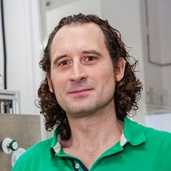Advances in Homogeneous Catalysis
A special issue of Molecules (ISSN 1420-3049). This special issue belongs to the section "Green Chemistry".
Deadline for manuscript submissions: closed (31 December 2019) | Viewed by 18787
Special Issue Editor
Interests: homogeneous catalysis; organometallic chemistry; green chemistry; sustainable solvents; deep eutectic solvents; water
Special Issues, Collections and Topics in MDPI journals
Special Issue Information
Dear colleagues,
During the last decades, the use of metal-, organo-, and bio-catalysts in Organic Synthesis has granted access to new molecules of a complex structure through the formation of carbon–carbon or carbon–heteroatom bonds, in a myriad of scientific reports. In addition, and as Gadi Rothenberg stated in his book "Catalysis", catalysis is the key to sustainability. A catalyst is a chemical substance that facilitates a chemical reaction without changing its thermodynamic parameters, by creating a new and kinetically favoured reaction pathway that is faster than the non-catalysed version of the reaction. Moreover, the catalyst is not consumed in the process, thus a small amount of the aforementioned catalyst can participate in several catalytic cycles, paving the pathway for the possible recyclability of the catalytic system. Moreover, the employment of catalysts also offers other interesting advantages, thus opening the door to the improvement of the following:
(i) the selectivity of a selected process, which indirectly affects its efficiency, for obtaining the desired product with minor amounts of by-products and waste, thus decreasing the energy consumption and maximizing the atom economy of the process.
(ii) the tolerance to potentially degradable or sensitive functional groups (chemoselectivity), as catalytic reactions usually take place under milder reaction conditions.
(iii) enantiomeric excess: the employment of chiral catalysts allows for the transfer of the chiral information from the catalyst to the desired enantiomerically pure compounds, which present a high added value and are very interesting for the pharmaceutical industry.
Furthermore, it is important to note that, in the field of Organic Synthesis, the use of metallic complexes, organocatalysts, and enzymes represents one of the cornerstones for the development of new synthetic methodologies, as they not only allow for previously discovered organic reactions to be carried out in a catalytic manner, but they also unlock the discovery of new processes in organic synthesis that were unknown until the irruption of catalysis. Finally, it is worth noting that it is difficult to find advanced organic syntheses (both at an academic or industrial level) in which any of the aforementioned catalytic methodologies (metal-, organo-, or bio-catalysis) are not used in any of their synthetic stages.
This Special Issue will collect the best selection of state-of-the-art contributions in the fields of metal-, organo-, and bio-catalysed organic reactions, focussing on the catalytic organic syntheses that take place under homogenous conditions.
Dr. Joaquín García Álvarez
Guest Editor
Manuscript Submission Information
Manuscripts should be submitted online at www.mdpi.com by registering and logging in to this website. Once you are registered, click here to go to the submission form. Manuscripts can be submitted until the deadline. All submissions that pass pre-check are peer-reviewed. Accepted papers will be published continuously in the journal (as soon as accepted) and will be listed together on the special issue website. Research articles, review articles as well as short communications are invited. For planned papers, a title and short abstract (about 100 words) can be sent to the Editorial Office for announcement on this website.
Submitted manuscripts should not have been published previously, nor be under consideration for publication elsewhere (except conference proceedings papers). All manuscripts are thoroughly refereed through a single-blind peer-review process. A guide for authors and other relevant information for submission of manuscripts is available on the Instructions for Authors page. Molecules is an international peer-reviewed open access semimonthly journal published by MDPI.
Please visit the Instructions for Authors page before submitting a manuscript. The Article Processing Charge (APC) for publication in this open access journal is 2700 CHF (Swiss Francs). Submitted papers should be well formatted and use good English. Authors may use MDPI's English editing service prior to publication or during author revisions.
Keywords
- Homogeneous catalysis
- Metal-catalysis
- Organo-catalysis
- Bio-catalysis
- Organic synthesis
- Green chemistry






